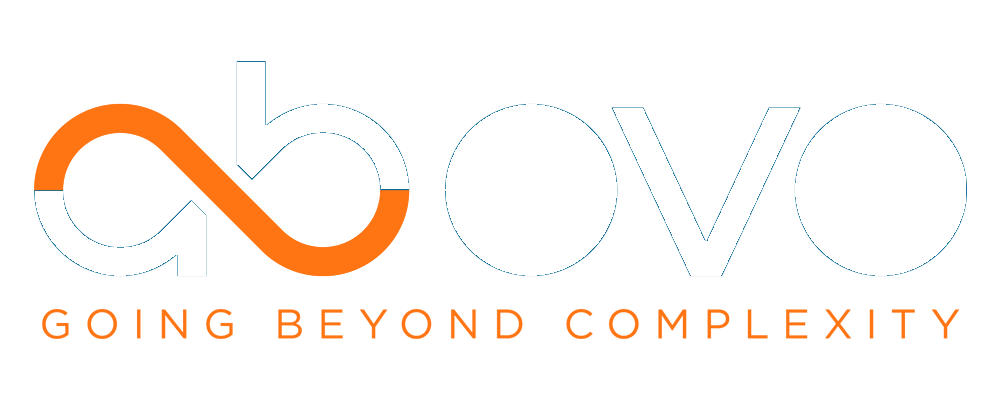Written by Rikko Kleijweg
SmartRail Solutions | 7 mins read
– Rikko’s Perspective on Rail
With over 20 years of experience, Rikko loves Rail. Because our Ab Ovo colleague Rikko is a well-respected ‘Rail Wiki’, we have asked him to write down compelling trends and developments in Rail. In this blog post, he throws in five trending topics that may be useful to have on your radar for 2022.
Rikko's Perspective on Rail
5 trending topics that may be useful to have on your radar for 2022.1. Digitization in the Transport Chain
Improving the level of digitization has always been important for a closer, more efficient, and higher quality integration and thus cooperation in transport and supply chains. By having access to data and by timely sharing of data with all relevant parties, the chain can reach a higher throughput by being predictable, reliable, and complying with customer demands, against lower costs and reductions of manual labor.
There are several levels of integration, but it starts with the (bilateral) timely exchange of data and continuous updates to reflect the inevitable changes that will have an effect on the whole transport chain. The next levels are in expanding the integration from bilateral to all partners and in processing the data ‘over the transport chain’, which will add control and insights, decision support on resources, capacity, and solving issues in an optimal way and on a higher level. By adding AI (artificial intelligence) and ML (machine learning) the options are even further expanded. For the position of rail, further digitization is crucial.
Examples of important current rail and logistics initiatives are:
- Interoperability (TAF TSI),
- Rail Freight Forward (RFF),
- electronic Freight Transport Information (eFTI),
- Paperless driving.
2. European Green Deal – Mobility and (Rail) Transport
It is clear and recognized that sustainability and environmental impact will be an important topics in 2022 and beyond. Rail remains one of the safest and cleanest transport modes and is therefore at the heart of EU policy to make EU mobility more sustainable. The related efforts will certainly have positive consequences for rail transport.
Although the European Year of Rail 2021 has ended, it does not mean that the EU rail-related transport developments will stop. On the contrary, to support the transition to cleaner, greener, and smarter mobility, in line with the objectives of the European Green Deal, the Commission has adopted four proposals that will modernize the EU’s transport system. These proposals will put the transport sector on track to cutting its emissions by 90%. Elements are ‘Smart and sustainable TEN-T rail corridors’, ‘Fit for 55’, ‘Shift to Rail’. When looking at energy-saving options, you can also consider optimization of fuel or electricity usage in planning and operations.
European Green Deal
Rail remains one of the safest and cleanest transport modes and is therefore at the heart of EU policy to make EU mobility more sustainable.3. Artificial Intelligence (AI) and Machine Learning (ML) in Rail
Artificial Intelligence and Machine Learning are becoming increasingly important in the Rail sector and becomes also attainable for SME parties. Combining rail business knowledge and AI and ML will add value to your processes, for example by gaining in-depth insight into processes and data and decision support. This can be applied in all business processes; some interesting examples are Capacity management and Asset management.
Asset management – Looking at assets in the rail, the focus on costs, performance, and risks is becoming increasingly important. Supported by AI-based decision support and advanced data analytics, this can be optimally balanced. It is about gaining insight into all the data that is used in the various business systems. Asset management can be defined as comprising all systems, methods, procedures, and tools to optimize costs, performance, and risks for the complete rail infrastructure life cycle.
For Capacity Management there is the same focus on costs, performance, and risks. Capacity management concerns a wide variety of planning actions used to ensure that the business has adequate resources to maximize its potential activities, ranging from strategic to operational terms. Applying AI and ML give new and advanced possibilities and opportunities to make smarter capacity planning decisions, based on in-depth knowledge and insight into accurate data and (hidden) dependencies and enablers. Some examples are
- The Smart Network Solution for strategic design of the (future) network infrastructure, optimizing capacity versus investments.
- Resource planning and optimization for SMEs, giving decision support, control, and insight.
- The Digital Capacity Management initiative to optimize the capacity of the existing European infrastructure; see the Joint Vision for the Sector on Digital Capacity Management.
4. Automation (and doing the right things right at once)
Rail freight can still gain a lot through automation. Automation is one of the important factors in each Railway Undertaking to push the operational, planning, maintenance, and administrative processes even further. Like digitization, automation will lead to ‘faster, cheaper, and better’ performed processes and to focusing only on what really needs attention. Digitization is a powerful tool to support the further automation of processes in rail freight. A part of automation can also be in focusing on prevention, as prevention is much cheaper and is less frustrating than solving issues during or after operations. Think of automatically performing ‘sense checks’, cross-checking, plausibility checks, and proposed solutions in case of anomalies, and at the same time, improving the data quality.
The focus of automation can be on specific processes, on the flow between processes throughout a company, and even including the flow between partners (outsourcing, hiring a supplier). Typically, automation will affect more than one process, because of inter-process dependencies, (pre-)conditions, and required data. A variety of examples of automation are:
- Mobile applications on the rail yard give access to the latest data, requiring less work (enter data only once or even better: not at all), giving better quality and real-time insight.
- Scanning and inspection portals or even drone inspections.
- Further automation of administrative work in IT systems and or automation of physical work.
- Digital Automatic coupling (DAC).
Doing the right things - at once
Automation is one of the important factors in each Railway Undertaking to push the operational, planning, maintenance, and administrative processes even further.5. The New Silk Route – developments
The New Silk Road continues to grow in volumes and expand in transport relations and did it again in 2021. Numbers, the China-Europe train reaches 180 cities in 23 European countries; and 1.46 million TEUs of cargo was shipped by train between Europe and China, an increase of 29% (China National Railway Group).
However successful, there are also some critical notes to be made. A general consensus for the future of the New Silk Road focuses on one thing: there is a need to put quality over quantity. Considering the long transit times and congestion on the corridor, it is time to focus on reestablishing the quality of the corridor, several industry players agree. This means less focus on new routes and more on improving our current services.
The geopolitical aspects have been discussed over the years. The potential downsides materialized lately with issues regarding Belarus. And now, with Russia invading Ukraine, we experience a real issue of which the impact is currently hard to tell.
With over 20 years of experience, Rikko Kleijweg is a seasoned business consultant and product manager at Ab Ovo. As product manager he is responsible for the functional content and development of the Rail Cargo System (RCS) and 4RC SaaS, our ERP solutions for large and medium sized rail operators. During his career he worked as a consultant for many different rail companies in Europe.


